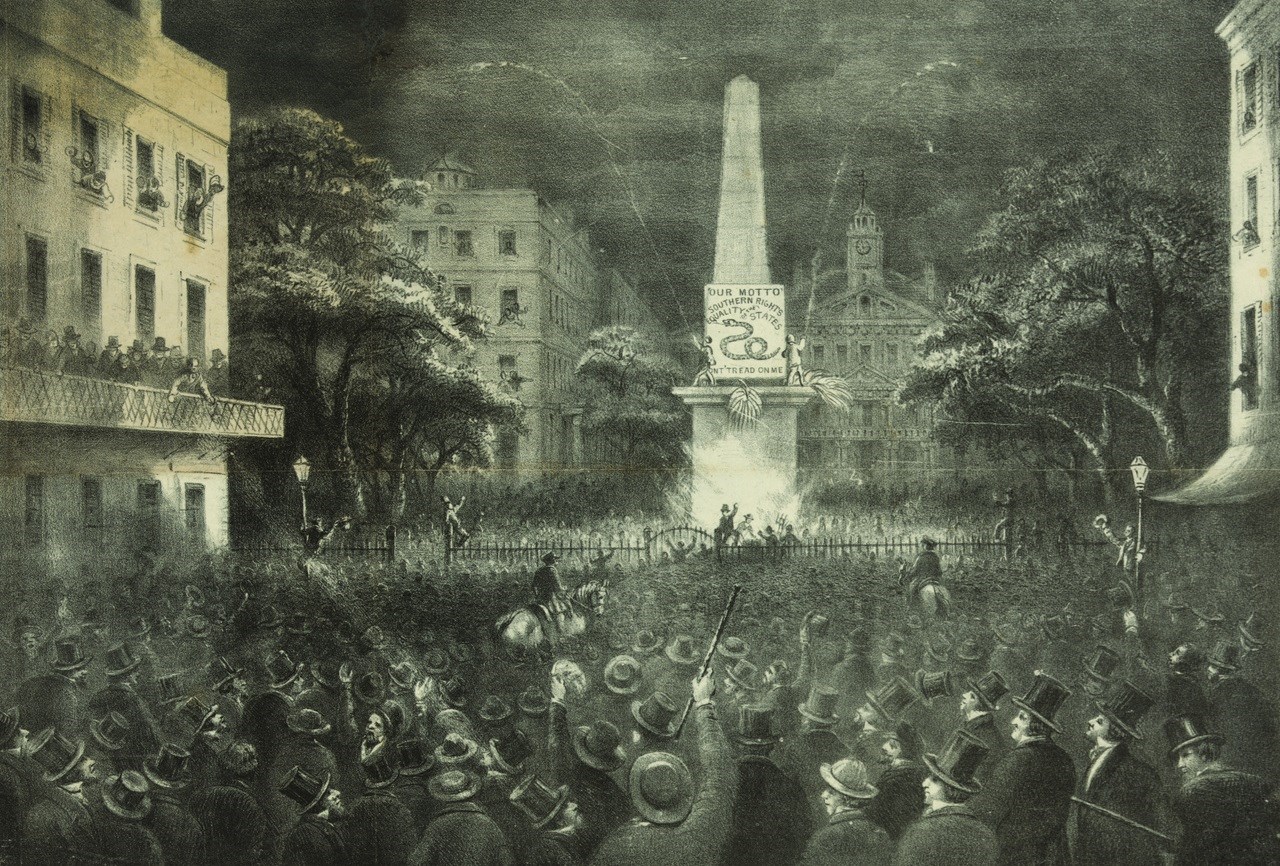Last updated: December 9, 2024
Article
The Nation Unravels

Library of Congress
Georgia Siezes Fort Pulaski
Following South Carolina’s secession in 1860, Georgia governor Joseph Brown, fearing that U.S. troops would reinforce lightly held Fort Pulaski, ordered the state militia to seize the fort. On January 3, 1861, state troops marched into the fort and took it without firing a shot. Held by an ordnance sergeant and a custodian, the strategically located fort was peacefully turned over to state control. Now the governor could be assured of keeping the vital port of Savannah open to shipping. A small steamboat began a daily routine of making the fourteen-mile trip to the fort. It brought food, supplies, and letters from appreciative citizens of Savannah. One lady sent the militia a “fine fruitcake iced beautifully and the word ‘Secession’ wrought in with sugar.” Nearly three weeks later, Georgia voted to secede from the Union, and the nation continued down the path to war. Three months later, the Civil War began.
NPS Photo
“I ...can see it all now”
Charles Olmstead, a Savannah cotton merchant, marched into Fort Pulaski with the militia. Fifty years later, when writing his memoirs, he could still recall that day:
“With the dawn the air was filled with the sound of martial music and by 8 o’clock the commands that had been designated for the service were down at the wharf ready to embark on the little steamer....The balconies of the various stores and counting rooms overlooking the water were filled with people waving their handkerchiefs and cheering.... We reached Cockspur Island in due time, the little battalion was formed upon the North Wharf and then with drums beating, colors flying and hearts swelling we marched over the drawbridge, under the portcullis and into the fort. I can shut my eyes and see it all now, the proud step of officers and men, the colors snapping in the strong breeze from the ocean, the bright sunlight of the parade as we emerged from the shadow of the archway, the first glimpse of a gun through an open casemate door. One and all they were photographed on my mind and will never be forgotten.”
Olmstead and the new garrison had their work cut out for them. Fort Pulaski had been neglected over the years. It had very few working cannons, the quarters were unfit to live in, and the moat was filled with marsh grass and mud. The Georgians spent months restoring the fort to a livable and defensible state. In the autumn of 1861, Olmstead took charge of Fort Pulaski, and he was the fort commander during the battle in 1862.

NPS Photo
A Historic Flag?
In the months leading up to the outbreak of the Civil War, pro-secession citizens paraded through the streets of Savannah with banners such as the one shown here and in the image on the reverse. The flag bearing the motto “Don’t Tread on Me” harkened back to the American Revolution during which South Carolina representative Christopher Gadsden gave a similar flag to be displayed on a naval vessel.
During the American Revolution, the rattlesnake symbolized anti-British and prorevolution sentiments. Ironically, both sides in the Civil War believed they were upholding the principles of the American Revolution: freedom, independence, and the rights of individuals.
